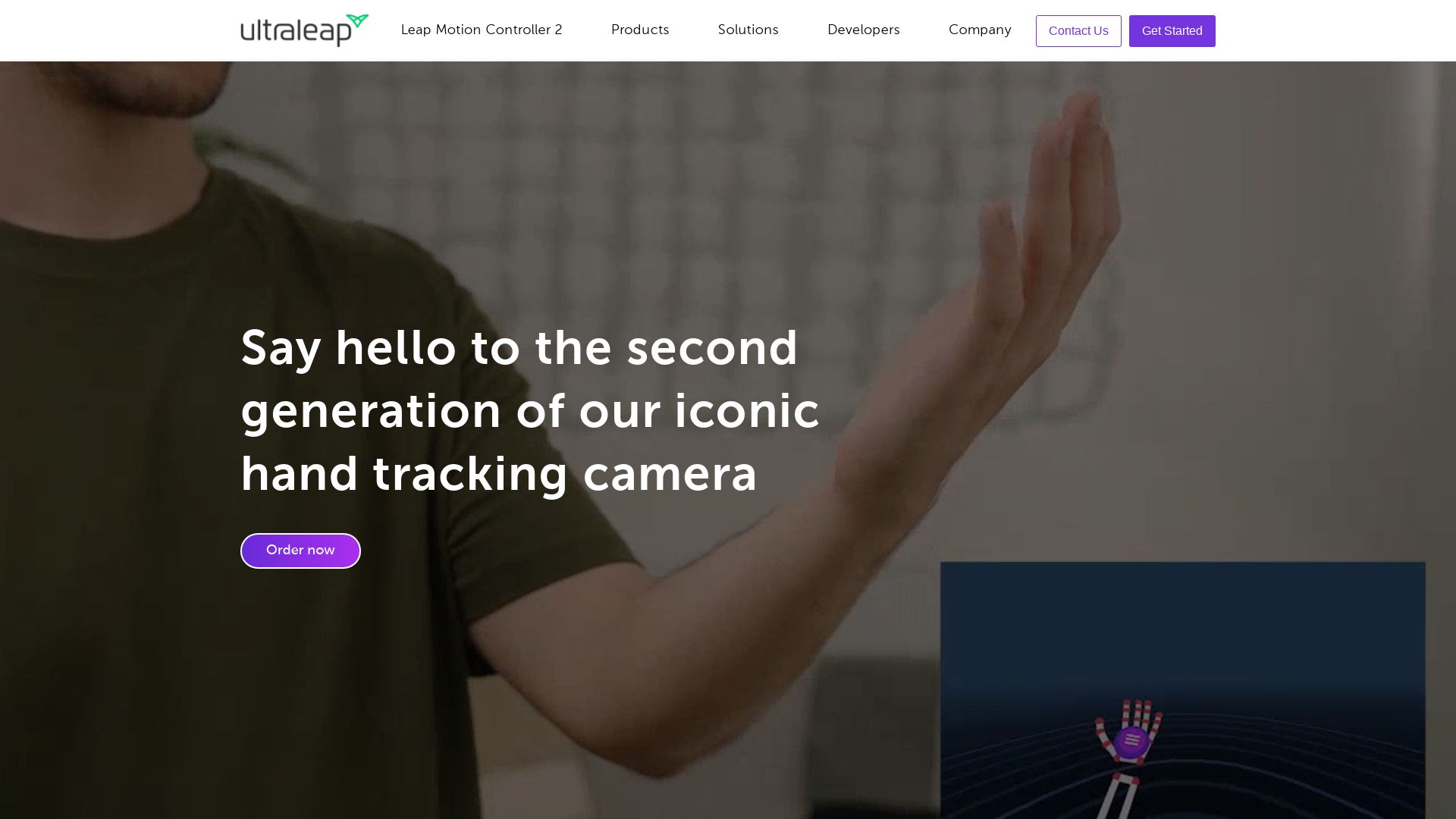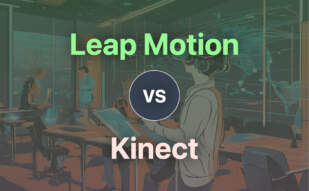Kinect by Microsoft is a groundbreaking technology that revolutionized motion control for gaming and beyond. Launched in North America in 2010, Kinect quickly surpassed sales expectations and showcased Microsoft’s commitment to innovation.

For those exploring alternatives to Kinect, options include Ultraleap, Leap Motion, and MediaPipe.
Ultraleap

Ultraleap, an exquisite amalgamation of Leap Motion and Ultrahaptics formed in 2019, is a global leader in hand tracking and haptic technology, manifesting touch sensations in mid-air. With a diverse team of over 150 individuals spread across Silicon Valley and Bristol, UK, the company is a nexus of expertise in multiple domains like interface design, acoustics, machine learning, and computer vision.
Ultraleap Prominent Features
- Exceptional hand tracking technology – Leap Motion Controller 2
- Enhanced hardware compatibility with VR/MR/AR headsets, PCs, and holographic displays
- High-resolution camera and increased field of view
- Reduced power consumption by 25%
- Applications in AR with ARGO by DigiLens, VR with Pico and PC VR with Varjo Aero
| Feature | Benefit |
|---|---|
| 30% smaller package | Increased portability and ease of use |
| Resources – Unity, Unreal, & OpenXR integration | Prepares developers with the essential tooling for a seamless experience |
| Partnerships with ASUS, Hewlett Packard, Best Buy, Newegg, Amazon | Enhances distribution and market reach |
Ultraleap Downsides
- Despite its acclaimed accuracy, the initial sales of the product underperformed
- The Orion software, while being progressive, is considered to have its imperfections
Ultraleap Pricing
The Leap Motion Controller 2 is available for pre-order at a price of $139 (USD).
Ultraleap Use Cases
Use case 1: Training Tools
The cutting-edge hand tracking technology provided by Ultraleap can reshape the landscape of training tools, creating a more immersive learning environment.
Use case 2: Art & Music Expression
In the realm of art and music, the application of Ultraleap promises a unique sensory experience, enabling artists to interact with their creations in a whole new way.
Use case 3: Game Developers
Game developers can leverage the advanced technology of Ultraleap to design games with highly interactive and intuitive controls, revolutionizing the gaming industry.
Leap Motion

Founded in 2010 by Michael Buckwald and David Holz, Leap Motion is a pioneer in the VR Hardware industry known for its software and hardware sensor devices, specially designed for hands and finger motions inputs. Acquired in 2019 by Ultrahaptics, to form Ultraleap, the company has delivered its game-changing technology to various sectors, boosting capabilities in VR experiences, complex task mastering, and 3D manipulation.
Leap Motion Top Features
- State-of-the-art Hardware sensor device focused on hands and finger motions as input.
- “Orion” – A dedicated platform for hand tracking in VR.
- Accuracy of controller pegged at 0.7 millimeters – aims to deliver precision.
- Compatible with Pico, HTC, and Varjo VR headsets.
- Technology powered by two monochromatic IR cameras and three infrared LEDs.
| First Product Shipment | July 2013 |
| Valuation in 2013 | $300 million |
| Acquisition Price in 2019 | $30 million |
Leap Motion Downsides
- Mixed reception for its Leap Motion Controller, based on performance.
- Significant operational delays – Full-scale shipping initiated only in July 2013.
Leap Motion Use Cases
Use case 1 – Designers & Engineers
Leap Motion’s precise tracking and gesture-based interaction has proven to be instrumental for designers and engineers, allowing them to manipulate 3D models with a high degree of accuracy.
Use case 2 – VR Enthusiasts & Gamers
Their hardware and ‘Orion’ software package are used extensively by VR enthusiasts and gamers for hand tracking in VR, providing an immersive and interactive gaming experience.
Use case 3 – Educators & VR Training
Educators and professionals involved in VR training leverage Leap Motion’s technology for digital content navigation, further enhancing the educational value of virtual reality.
MediaPipe
Ever dreamt about custom-built machine learning solutions for live and streaming media? Dare to enter the reality of MediaPipe, a cutting-edge platform by the tech powerhouse, Google.
MediaPipe’s Best Features
- Cross-platform Pipeline Framework: Built to run on Android, iOS, desktop, edge, cloud, web, IoT.
- End-to-End Acceleration: Uses common hardware for ML inference and video processing (GPU, CPU, TPU).
- Exclusive Nodes (Calculators): Execute functions by producing/consuming packets. Talk about reinventing workflows!
| Google Backed | With Google’s stamp on it, MediaPipe currently thrives in its alpha stage. |
| Open Source | Licensed under Apache 2.0, customization is the motto! |
| Execution APIs | Written in C++, Java, Obj-C for robust functionality. |
MediaPipe Downsides
- Performance Optimization: Handling synchronization for multimodal graphs could be a challenge.
- Alpha stage: While Google’s strength lies in its innovations, remember it’s still in Alpha.
MediaPipe Pricing
No need to break your bank account for the audacious MediaPipe. As an open-source platform, it’s completely free!
MediaPipe Use Cases
Use case 1
For companies hoping to pioneer in rapid prototyping of perception pipelines for AI model inferencing, MediaPipe’s cross-platform capabilities make it an irresistible choice.
Use case 2
No-code developers, prepare for lift-off! Integrate MediaPipe with the Viso Suite enterprise computer vision platform for a seamless no-code development journey.
Use case 3
Media streaming companies, looking for scalable infrastructure? MediaPipe makes this possible by handling live and streaming media. Big dreams achieved with zero lines of code.
Grant Sullivan
Content writer @ Aircada and self proclaimed board game strategist by day, AI developer by night.





